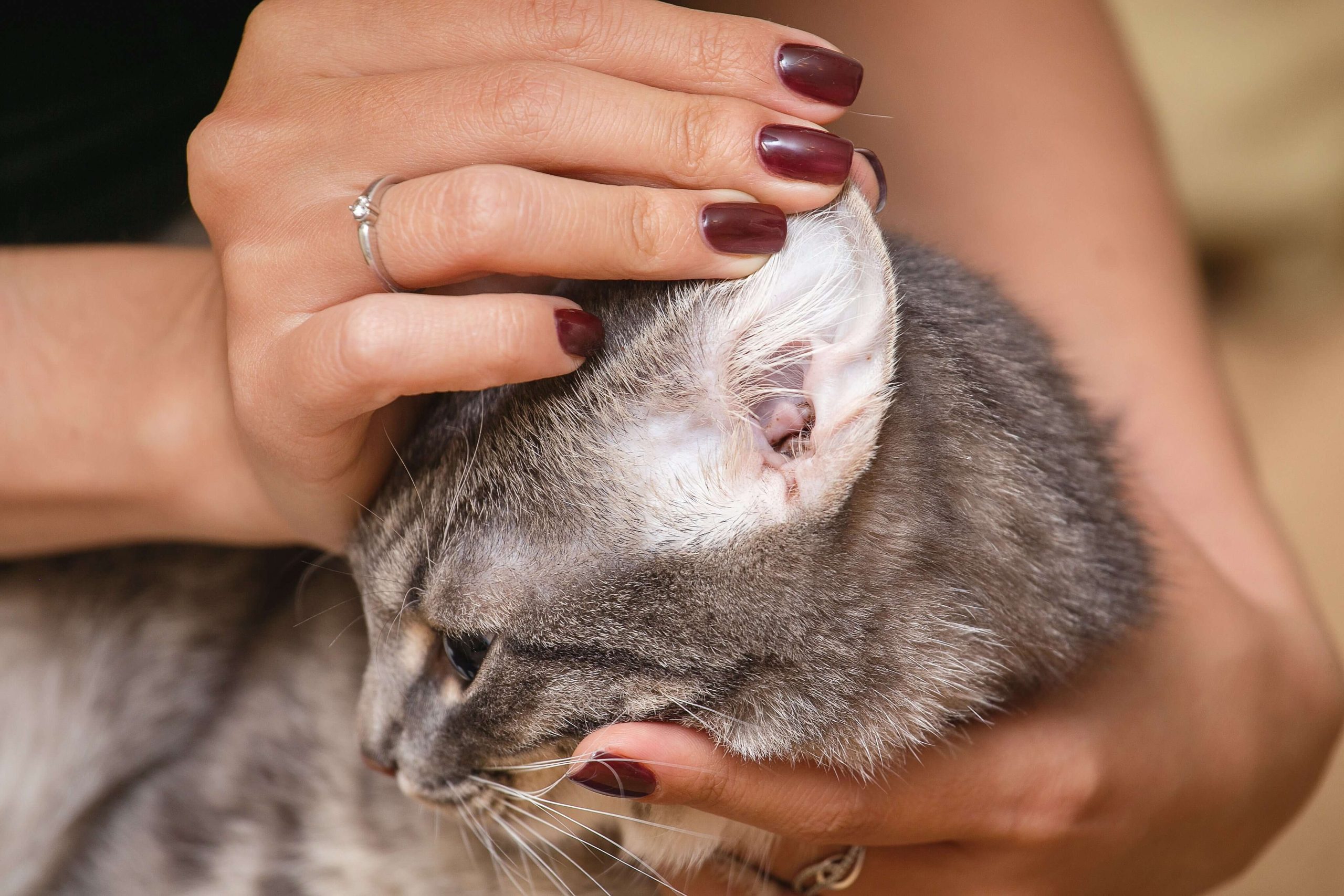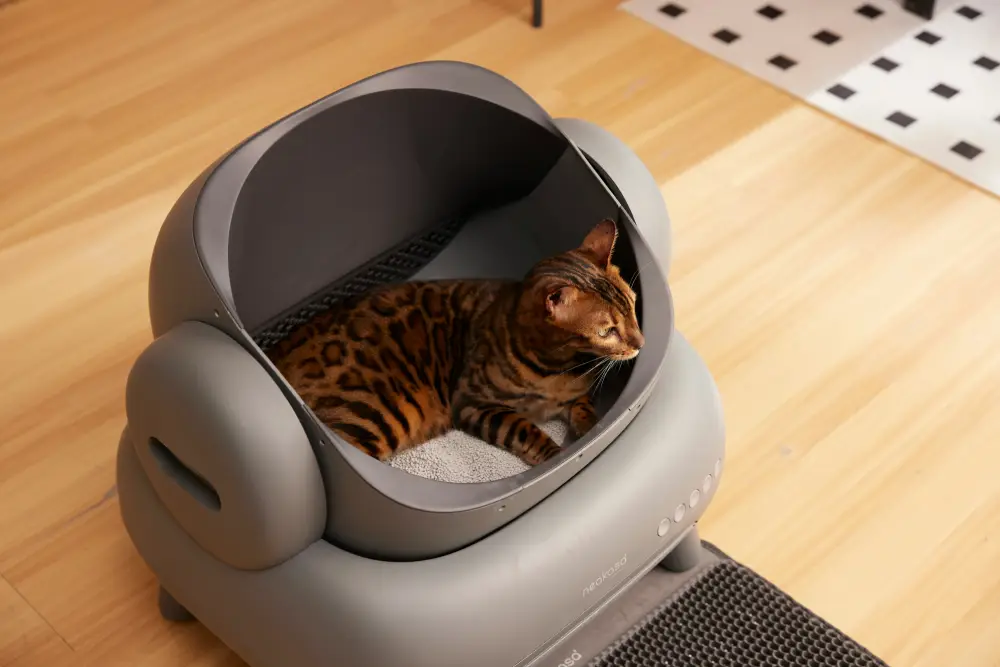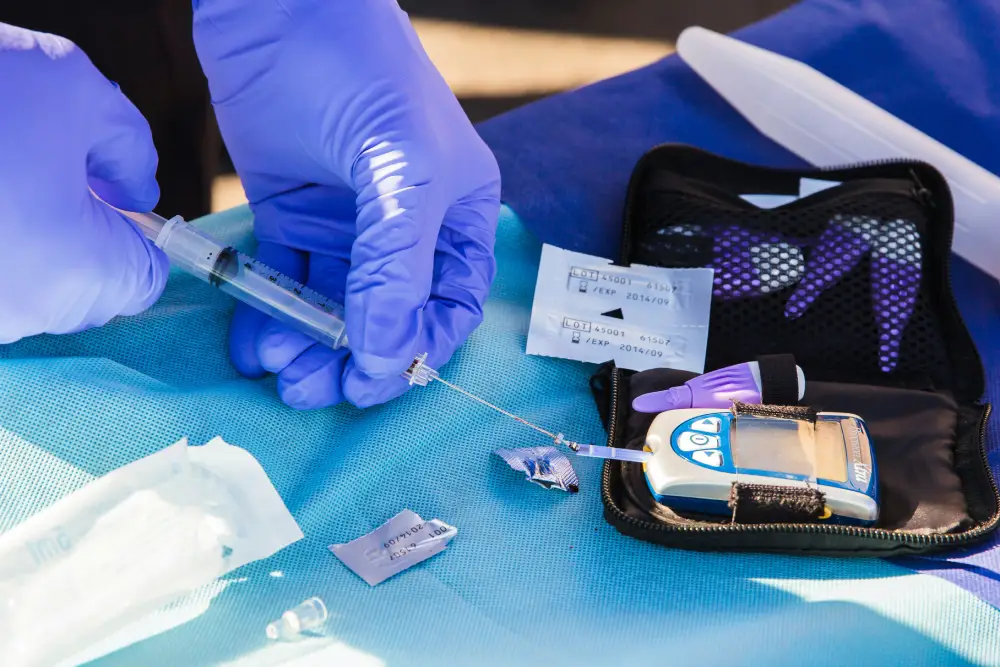
Everything You Need to Know About Ear Mites in Cats.
January 19th 2021
Symptoms of ear mites:
If your cat is consistently scratching their ear or shaking their head they are relieving an itch. There is a chance that the itch they are scratching is being caused by ear mites, a cat ear infection. However, do not fear, ear mites in pets is a common occurrence. A list of the most common symptoms of ear mites:
– Dark and dry discharge within the affected ear
– Red inflamed ears
– Consistent scratching of ears
– Consistent shaking of head
– Scratch marks around the ear
– Unusual Odour
It must be noted that these symptoms are also non-specific and can indicate several ear problems ranging from skin allergies to parasite infections. Therefore, it is best practice to ask for a vets opinion before treating the ailment.

What are ear mites?
Ear mites are microscopic and infectious organisms. They are hard to spot with the naked eye, but under a microscope they look like tiny white dots. They are a common parasite in both dogs and cats, with the most common type in cats being the Octodectes cynotis.
They are transferred between animals coming in close contact with one another and exist within the hosts ear canal and feed off their skin oils and wax. Their life cycle lasts for around two months but they do breed at a rapid rate with eggs only taking four days to hatch and three weeks to fully mature into an adult.
What causes ear mites?
Ear mites in cats are caused by coming into contact with other pets. They change hosts often, climbing from one cat to another. However, they can also survive for a short time in the environment during which they can hop onto any cat that passes by. Therefore, outdoor cats are most likely to be affected by an ear mite infestation.
How are ear mites in cats Diagnosed?
As shown in the video above, the vet will examine your cat’s ear canal using an otoscope, this will pick up any signs of infections such as inflammation, swelling, and discharge. They will also keep an eye out for any other ear problems such as foreign objects blocking the canals.
If your cat is experiencing severe pain and is unable to sit still for the duration of the examination, they may need to be sedated. If there is discharge present, it will be collected, and examined under a microscope to check for both infections and mites.
How can you treat ear mites?
Ear mites are fairly easy to treat, you can either put anti-mite drops down into the ear regularly for a few weeks, but also many spot-on flea products are great for the prevention and treatment of ear mites. This will be the most likely form of treatment provided by your pet, but they may also prescribe additional medication to relieve the symptoms if your cat is experiencing a severe infection.
If your cat is diagnosed with ear mites, be sure to give your carpets and cat bedding home a thorough clean to prevent another infection in the future. Also, make sure you follow any further advice given to you by your vet.
Further Reading:

 Shop Dog
Shop Dog
 Shop Cat
Shop Cat
 Vet Know-how
Vet Know-how Contact
Contact


